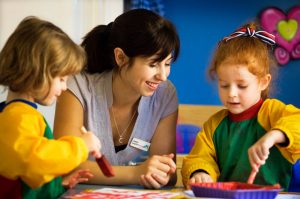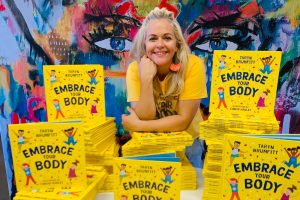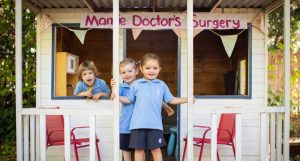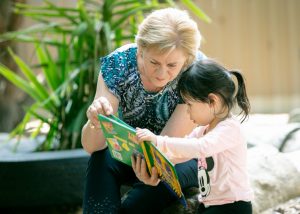Kids’ sleep: check in before you switch off
University of South Australia researchers are calling for parents to check on their small snoozers before switching off for the night to avoid undiagnosed sleep-disordered breathing.
University of South Australia researchers are calling for parents to check on their small snoozers before switching off for the night to avoid undiagnosed sleep-disordered breathing.
Embrace Kids, Taryn Brumfitt’s follow-up to her 2016 break-out documentary Embrace has been officially green lit for production, with The South Australian Film Corporation and Screen Australia today announcing production investment for the film.

In the last few weeks, ‘Maths Wars’ headlines have dominated the national educational conversation providing a new debate for educational leaders to weigh in on. Head of Junior School at Seymour College, Katharyn Cullen, talks us through the approach to Mathematics education at Seymour.
16 year old Adelaide girl and climate change activist, Amber Brock-Fabel has been awarded the Young Achiever of the Year for the South Australian Environment Awards 2021. The new award honours the memory of young environment campaigner Leif Justham who tragically died in April while riding his bike around Australia to help raise awareness of environmental issues. Amber has shared her achievements and her story with us.

The next important stage of Westminster School’s $38 million Campus Masterplan is underway with the development of an impressive Cultural Centre that will redefine the heart of the cultural precinct on campus, giving students and families an even greater sense of connection to the School and community.

Placing your child into the care of someone else, in an environment other than your home, is an act of enormous importance that hinges entirely upon trust. You have to trust the people caring for your child, trust that the setting is safe, trust that your child will be nurtured and inspired. So, what does a parent do if they can’t find a place they trust? In Barbara Langford’s case, the answer was to create one herself.

As Taryn Brumfitt leads into the production of Embrace Kids, a feature-length documentary to increase body positivity aimed at children aged 8-12 years, she is turning her attention from international corporate speaking gigs to something near and dear to her heart, presenting at local South Australian schools. Here’s how your school can be involved.

It’s no secret that the early years of your child’s life are fundamentally important for building the foundations of their future development. Wilderness School believes in providing the highest quality early childhood program which honours and celebrates the unique qualities of each girl, every step of the way. We found out more about the early learning philosophy at Wilderness School.

SA Montessori is incredibly proud to announce an innovative and inspiring new partnership with ECH, one of the largest integrated providers of retirement village accommodation and ageing care services in South Australia. Together they are building a pioneering project that will place early learning and retirement residences side-by-side.

Katharyn Cullen, Head of Junior School at Seymour College, believes in manifesting a love of words in our next generation. With a strong focus on – and belief in – the benefits of explicit literacy instruction, Katharyn’s enthusiasm and passion for promoting a love of language stems first and foremost from a sense of responsibility to our youngest learners, our children. We chat with Katharyn about her tips for improving literacy outcomes and what the Junior School model for education at Seymour looks like in the classroom.

Mercedes College is delighted to be part of the South Australian Commission for Catholic Schools (SACCS) initiative, which is waiving Terms 3 and 4 fees for 2021 Mid-Year Reception enrolments.

KID FRIENDLY REIVEW – Cluey Learning Online Tutoring: KIDDO reviewer Carla Caruso put her primary school-aged son in the hotseat for some online, face-to-face tutoring with Cluey Learning

How to teach our children empathy: Some find empathy natural and others need a helping hand. The good news is, empathy is teachable and learnable. Like with all social and emotional intelligence skills, the earlier you start, the better. Madhavi Nawana Parker from Positive Minds Australia gives us her 5 favourite strategies to help young people become ’empathy aware’.

Goodstart Early Learning have recently opened a new centre on Moules Road at Rostrevor!

If you’re a parent looking into private schooling options, you might be wondering about the value of a single gender education environment. We’ve worked with the team at Blackfriars to look at the way, as a school for boys, they focus on learning that addresses not only how to excel in academics, but also how our boys can grow into young men of character – with integrity and empathy.